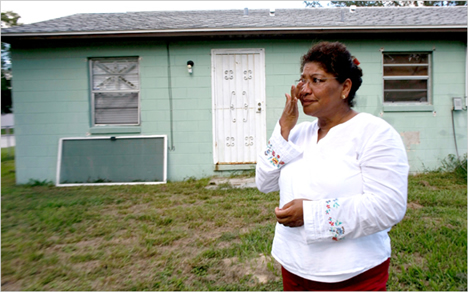Voters are being pulled hard from both directions in South Texas (2/25/2008)
The number of people speaking Spanish at home in the U.S. has increased from 30.5 million in 2004 to 34.0 million in 2006 (11/29/2007)
Guadalupe Perez Gonzales filed suit in a Waco district court Wednesday against Joe Rodriguez and the chamber (11/29/2007)
Latino community leaders see this as the time to act if they want to head off gangs becoming so organized they actually claim specific Salem neighborhoods (11/28/2007)
The Patriots drew a 7.5 rating among Hispanic viewers, surpassing ABC's "Dancing with the Stars" (11/28/2007)
In recent weeks the worry about illegal immigration has slightly edged out terrorism for fourth place (11/28/2007)
There are 11,621 firefighters in NYC, but just 666 of them are Hispanic, 337 are black and 75 Asian-American (11/28/2007)
While the immigration debate in Congress ended months ago, the immigrant jokes haven't (11/28/2007)
Nearly 9 percent of Hispanic high school students dropped out of high school in the 2005-06 school year (11/27/2007)
Venezuela seems likely to start an extraordinary experiment in centralized, oil-fueled socialism (11/17/2007)
Marilyn Martinez dies at 52 (11/13/2007)
Three guns linked to Pancho Villa were auctioned for nearly $29,000 (11/12/2007)
Juan Luis Guerra was the big winner at the eighth annual Latin Grammy Awards (11/09/2007)
Last year, blacks were 2.3 times more likely, and Hispanics twice as likely, to get high-cost loans as whites (11/04/2007)
"The Democrats clearly do not want to antagonize Hispanic voters" (11/01/2007)
Maybe Mr. Gold was working the wrong market (10/30/2007)
Democratic strategists know that the Latino vote is their future (10/29/2007)
The B & H photo and electronics equipment store has agreed to pay $4.3 million to settle a discrimination case (10/17/2007)
"For blacks, especially, it mimics the 50s-style suburban movement, most pronounced for married couples with children, owners and the upwardly mobile" (10/17/2007)
Disparities in Mortgages by Race (10/15/2007)
"Mr. McPherson knows what he likes and he works extremely hard to make ABC's shows better" (10/07/2007)
We would like to find fugitive aliens at 100 percent of the locations we go to, but it's not an exact science (9/21/2007)
"The Republican candidates need to understand that they are doing a great disservice to our country" (9/10/2007)
previous ↓





